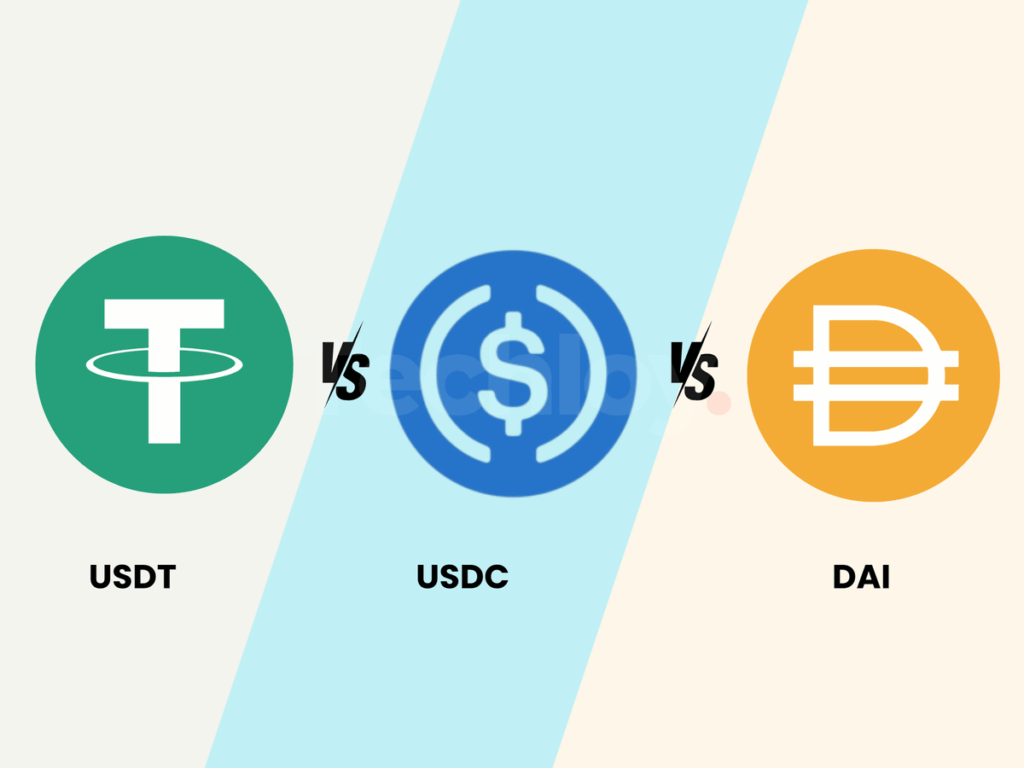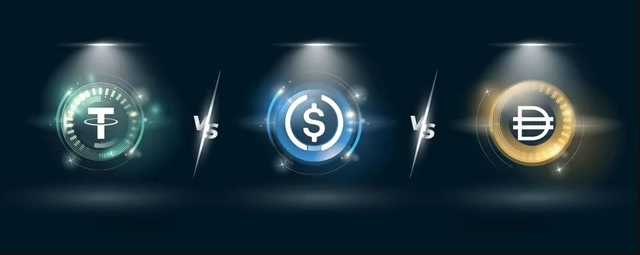
Stablecoins are like “cash rails” for crypto: tokens designed to track $1 so traders, builders, and regular people can move money quickly. The three with the most mindshare are USDT (Tether), USDC (Circle), and DAI (MakerDAO). At the wallet level they look similar, but they differ in collateral, governance, transparency, censorship controls, and where they shine. Here’s how to pick—and what to watch.
TL;DR
- USDT: Most liquidity and the broadest exchange support. Historically faced questions about reserve transparency and regulatory risk, but it’s extremely liquid across chains and regions.
- USDC: Strong banking infrastructure, frequent attestations, and deep fintech integrations. Tighter controls on blacklisting/censorship; historically more sensitive to U.S. banking events.
- DAI: Decentralized stablecoin collateralized by crypto and some real-world assets (RWA). Benefits from on-chain governance and composability; the peg depends on collateral quality and protocol choices.
What makes a stablecoin “stable”?
All three aim for $1 ≈ 1 token, but mechanisms differ:
- Fiat-backed (USDT, USDC): The issuer holds cash or cash-like assets (e.g., T-Bills). With KYC, users can redeem 1 token for $1. Market makers arbitrage price gaps.
- Crypto-collateralized (DAI): Users lock collateral (e.g., ETH, stETH, liquid staking tokens, plus some RWA) in smart contracts to mint DAI, typically over-collateralized. Liquidations protect solvency.
A Look at the Three of Them
| Feature | USDT | USDC | DAI |
|---|---|---|---|
| Collateral | Fiat reserves (cash/short-term securities) | Fiat reserves (cash/U.S. T-Bills) | Over-collateralized crypto + some RWA |
| Governance | Company (Tether) | Company (Circle) | DAO (MakerDAO) |
| Redemption | Institutional/KYC | Institutional/KYC | On-chain via vaults/DEX (no centralized issuer) |
| Blacklist / Censor | Yes (contract-level freezes) | Yes (contract-level freezes) | No issuer blacklist; protocol/governance risks apply |
| Liquidity across CEX | Highest overall | Very high | High in DeFi; decent on CEX |
| Transparency cadence | Attestations; disclosures improving | Frequent attestations; “bank-grade” reporting | On-chain vaults + protocol risk reports |
| Main strength | Ubiquitous liquidity | Compliance + fintech integrations | Decentralization + on-chain composability |
Note: “Blacklist/Censor” refers to the ability of an issuer to freeze specific addresses at the token contract level (USDT/USDC). DAI has no central issuer, but governance can change parameters; also, DAI’s collateral may include censorable assets (e.g., USDC).

How to Use Them (and Which One Fits)
- Trading & Hedging
- USDT is often the default quote asset on global exchanges; deepest perp/spot pairs across venues.
- USDC also has strong liquidity, especially on U.S.-friendly platforms and fiat on/off-ramp fintech flows.
- DAI excels on DeFi-native venues (Uniswap, Curve, lending markets) for fully on-chain workflows.
- Payments & Transfers
- USDT is popular in emerging markets, works on low-fee chains (e.g., Tron), and is widely accepted by merchants.
- USDC integrates with payment processors/fintech APIs, helpful for businesses needing clean accounting and compliance.
- DAI fits on-chain payrolls/DAOs that value transparency and composability.
- DeFi Collateral & Yield
- DAI is built for DeFi: integrates naturally with vaults, lending, and structured products.
- USDC is the most common base asset in DeFi money markets; widely used for borrowing.
- USDT is broadly supported; some protocols set more conservative LTVs due to issuer risk perceptions.
- Invoicing & Treasury
- USDC often wins for audits/accounting thanks to reporting cadence and integrations.
- DAI suits crypto-native treasuries seeking on-chain control and governance exposure.
- USDT is useful where counterparties require it (exchange settlement, supplier payments).
The Most Important Risks (Know These Before You Size Up)
- Issuer/Reserve Risk (USDT, USDC)
- Stability relies on reserve quality and redemption liquidity (cash vs. T-Bills; speed of settlement).
- Banking/jurisdictional risk matters; banking disruptions can dent confidence and peg stability.
- Censorship/Blacklisting
- USDT/USDC can freeze addresses tied to sanctions/theft.
- DAI has no issuer freeze, but governance can alter parameters; collateral with censorable exposure (e.g., USDC) creates indirect risk.
- Depeg Risk
- Depegs occur when confidence wobbles (bank news, regulatory actions, collateral shocks). Arbitrage usually restores parity if reserves are solid, but timing pain is real.
- DAI depeg risk depends on collateral mix and liquidations; severe crypto drawdowns or RWA issues can pressure the peg.
- Smart Contract / Protocol Risk (DAI)
- Bugs/design flaws are possible despite audits and maturity.
- Governance can change collateral, stability fees, and risk parameters—affecting peg dynamics and yields.
- Chain/Bridge Risk
- Stablecoins live on many chains. Prefer native deployments or official canonical bridges for significant funds.
- Regulatory Risk
- Rules evolve (licensing, disclosure, reserve standards). Ensure your choice aligns with your jurisdiction’s compliance and reporting needs.
How to Decide Between USDT, USDC, and DAI
- Need maximum, global CEX liquidity → USDT.
- Prioritize audit trails, fintech rails, and compliance comfort → USDC.
- Building/operating in DeFi with on-chain control → DAI (or a balanced basket with DAI).
- DAO/crypto-native treasuries → DAI/USDC mix for composability + fiat bridges.
- Emerging markets, speed/fees/acceptance → often USDT.
Pro tip: Many teams diversify across multiple stablecoins to reduce issuer and depeg risk. Keep operational balances where you transact; park treasury balances where governance/transparency best fit.
Practical Safety Tips
- Verify token contracts to avoid look-alike tickers.
- Prefer native chain deployments; be cautious with wrapped/bridged versions.
- If censorship resistance matters, keep a portion in DAI (understand collateral exposure).
- In DeFi, monitor health factors/LTVs and oracle feeds; consider alerts/circuit breakers.
- Use reliable custody or hardware wallets; separate hot vs. cold balances.
- For large transfers, do a test transaction, and compare routes/fees (e.g., CEX → L2 withdrawals vs. third-party bridges).
Q&A
Which stablecoin is the “safest”?
It depends on the risk you care about. USDC is often favored for issuer/banking transparency; USDT dominates in liquidity ubiquity; DAI offers on-chain composability with fewer issuer controls—but adds protocol/collateral dynamics.
Can stablecoins earn yield?
Yes—via DeFi lending, LPing, or interest-bearing wrappers. Yield introduces extra risk (smart contract, counterparty, IL). Size positions accordingly.
Why do some exchanges only accept USDT?
Network effects. Many venues standardized on USDT as the universal quote. It doesn’t mean others are “worse”—just that quote liquidity is highest there.
Can any of them go to $0?
A total failure is unlikely for the majors, but not impossible. Diversify, use on-chain risk controls, and avoid over-sizing.
The Bottom Line
USDT, USDC, and DAI all offer $1-like utility, but via different trade-offs.
- USDT: unmatched everywhere-liquidity.
- USDC: transparency + fintech rails.
- DAI: on-chain composability with fewer issuer controls—provided you understand collateral and governance.
To balance liquidity, compliance, and decentralization, many users hold a mix of all three—often the most practical way to move money on crypto rails.